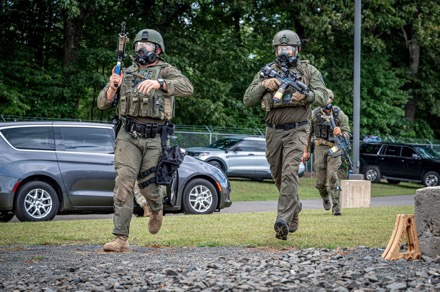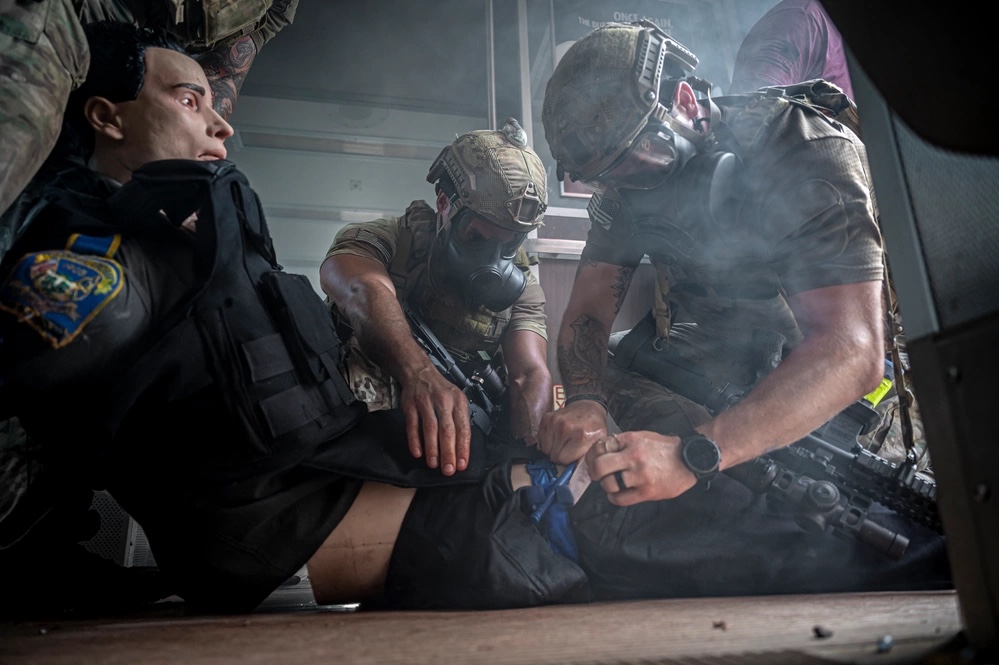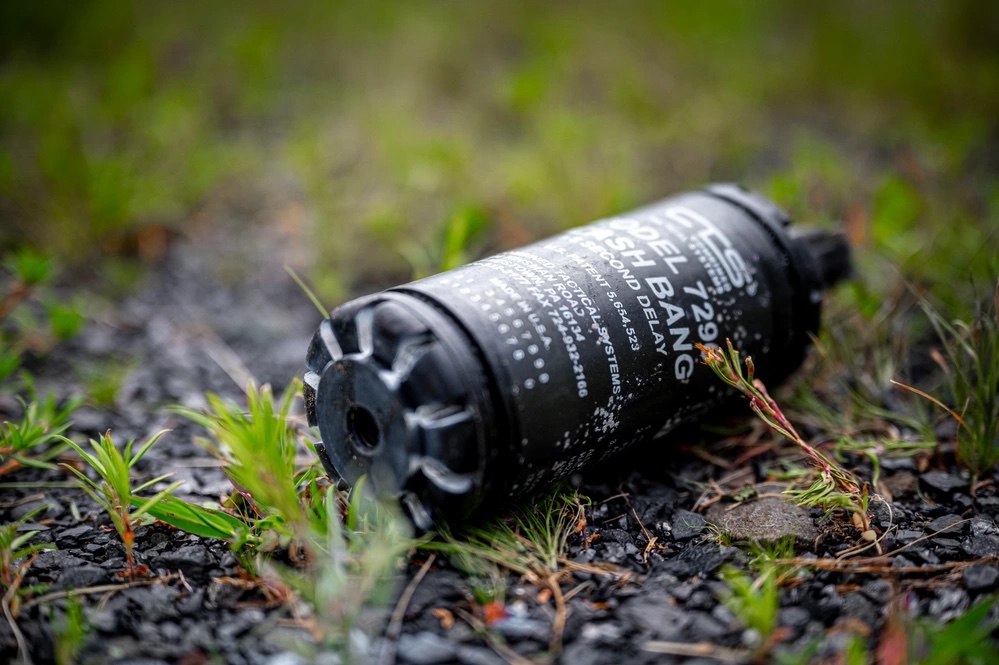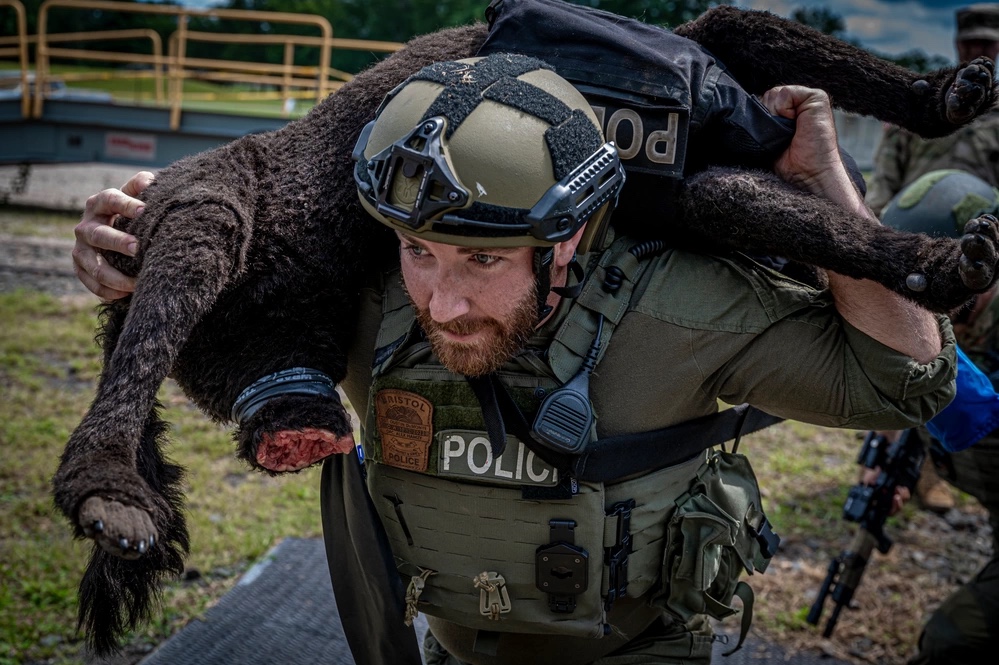
SWAT and Military teams put their tactical combat care skills to the test during the 5th Annual Tactical Rescue Challenge at the Connecticut National Guard’s Camp Hartell in Windsor Locks, Conn. Aug. 14, 2023.

The Tactical Rescue Challenge was created in 2018 as an additional piece to the annual Connecticut SWAT Challenge and tests police and rescue teams on critical medical skills and tactics necessary during rescue operations in austere environments.
“[The challenge is] really geared toward the team medic although operators are cross trained into medicine, so you have not just medics participating in the event but other operators for any kind of tactical team,” said Maj. Wesley Kyle. “There’s a heavy emphasis on medicine in addition to casualty evacuation rescue techniques, moving the casualties off the “X”, and performing treatments at appropriate times.”

Prior to 2001, a trauma patient may have received basic life-saving medical care when an Emergency Medical Technician arrived on the scene. However, Kyle said the wars in Iraq and Afghanistan lead to a shift in the point of origin for beginning emergency medical care from the EMT to the police officer or other first responders.
“Moving care toward the point of injury really started out of those wars and then quickly transitioned to the civilian tactical teams,” said Kyle, an Emergency Room doctor in the civilian sector with experience working with SWAT during his residency. “We’re still translating lessons learned from the battlefield because there was such a large loss of life with penetrating trauma, and there was kind of an explosion of new ideas … it’s changed the whole landscape and it’s incredible to see all these things fully adopted on the civilian side.”

Medical innovation is, of course, not something new on the battlefield. Tourniquets were first developed by the Roman army. The concept of triaging patients was developed by Baron Dominique Jean Larrey, chief surgeon in Napoleon’s Army. The ambulance was invented during the American Civil War. Tactical Combat Casualty Care, or TC3, methodologies were developed in the early 90s and fine-tuned during the Global War on Terror. There have also been massive advancements in preventative medicine, mental and emotional health, sanitation, plastic surgery and prosthetics, and many, many more.
For competitors in the Tactical Rescue Challenge, the primary focus was on TC3: care under fire, tactical field care, and tactical evacuation care. In one scenario, teams were required to breach a train and eliminate a threat before evaluating and applying field care to a simulated casualty and extracting the patient to a higher-level of care. A second scenario had teams extract a wounded K-9 from a tear gas-filled train car before administering a tourniquet.
While the idea of a first responder, such as a police officer, having the capability, training, and resources available to administer lifesaving first aid may seem logical, the truth is not every department or officer is afforded this luxury. In addition to providing a competitive environment for officers and operators to practice their skills in a stressful, high-pace environment, the Tactical Rescue Challenge is also meant to demonstrate the importance of incorporating these skills at the lowest level to improve the survivability for people in harm’s way.
To learn more about the Tactical Rescue Challenge, visit: www.ctswatchallenge.com/tactical-rescue-challenge
Photo by Timothy Koster, Connecticut National Guard Public Affairs Office


From what I understand the city of Santa Ana in SoCal was the first if not one of the first departments to send armed fireman “paramedics/EMTs” with their SWAT teams.